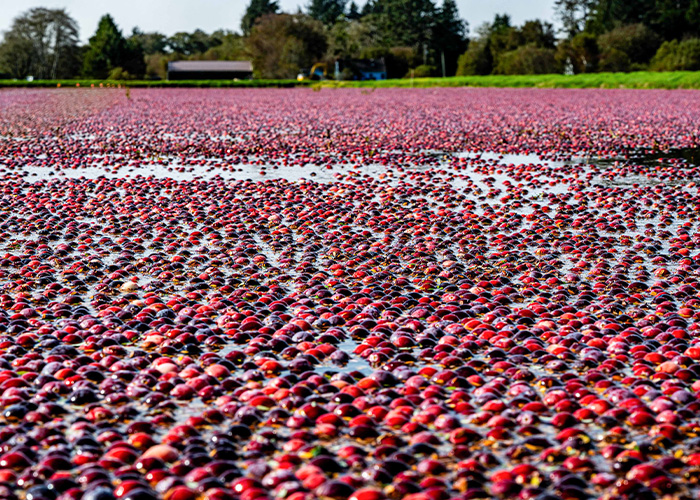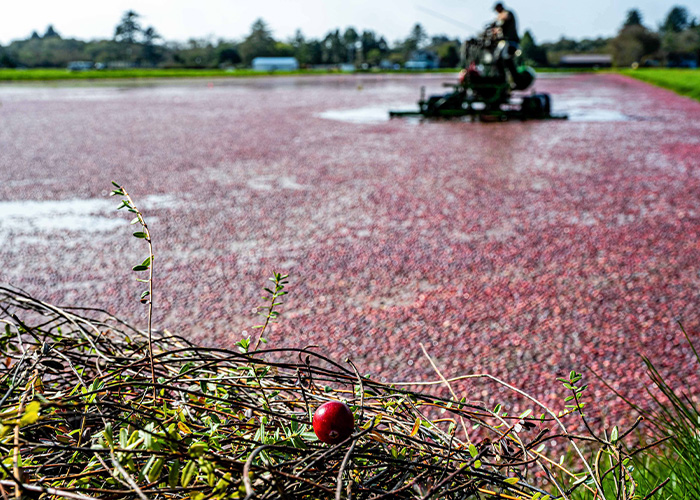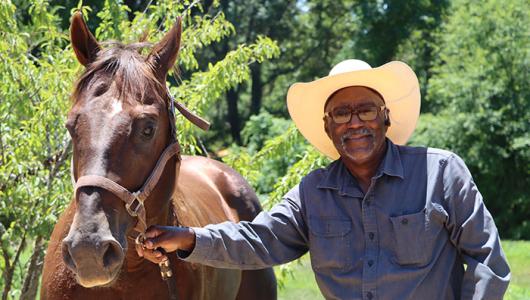This Friday meet Nick Wood, a long-time cranberry grower in Grayland, Washington. The state harbors a holiday secret slightly less well known than Santa Claus, but just as bright as Rudolph’s nose – cranberries. Small bogs of the festive ruby red fruit are nestled throughout the majestic Olympic Peninsula along Washington's Pacific coast. Cranberries are tended to by a dedicated group of farmers and families and have earned a prime spot at many holiday dinner tables.

A Coastal Tradition
Nick started out as a commercial fisherman in Alaska and decided to grow cranberries to earn additional income for his family. Growing cranberries is a longtime practice in Grays Harbor County, with many of the old-time fisherman and tradesmen growing the fruit in small one-acre bogs to supplement their income.
Nick has been a cranberry grower for over 45 years. He and his wife used to bring their babies in play pens to the dry bogs while they pulled weeds and maintained the crops. He now farms over 45 total acres, with around 16 acres being his personal bogs, and the rest as share crops that he manages for others in the community. His years of knowledge and experience have made him a person who others count on for help.

No matter if you like them juiced, dried, or threaded with popcorn on string, producing the classic holiday berry in this region comes with many challenges – challenges that USDA’s Natural Resources Conservation Service (NRCS) has been helping coastal communities conquer for many years.
“We have a long history of working with the cranberry growers here in Grayland and also along the Long Beach Peninsula,” said NRCS Resource Conservationist Benjamin Carroll. “We have worked in partnership with the local conservation districts to help cranberry growers with pesticide mitigation, irrigation efficiency upgrades, and improving pollinator habitat on the landscape.”

Overcoming Obstacles
Washington cranberry growers, like Nick, have had to deal with many obstacles to keep their heritage, traditions, and crops alive over the past few decades. Cranberry growing is very labor-intensive and requires a lot of intervention to produce a quality, high-yield product.
Over the years, cranberry growers have added expensive physical barriers to mitigate environmental impacts on the local watershed, and NRCS has helped him align with requirements for cranberry growers to attach coverings on the top of ditch cribbing.
“The crib and cover are a way to cover the open ditches in [the bogs] here so that when there is a pesticide application we’re helping to mitigate and keep that pesticide from being directly sprayed into the water,” said Benjamin.

Nick and other cranberry growers are leveraging NRCS’ Environmental Quality Incentives Program (EQIP) to meet these regulations. Through the cost-share program, NRCS has substantially reduced the amount of personal capital required by producers to pay for crib and cover projects. Additionally, NRCS has also helped growers upgrade irrigation systems with EQIP, as well as implement pollinator habitat programs through the Conservation Stewardship Program.
“Overall, it’s been great to work with [NRCS],” said Nick. “It has been an absolute necessity for us to try to comply with the environmental challenges in our area here when we’re talking about this cribbing and covering. Without the help from NRCS, none of this would have happened.”
The little red berry, with its small but storied history in coastal Washington has left its mark on more than just the local landscape. It has become a piece of the culture and pride of those who live and work in the area, with the town of Grayland having an annual Cranberry Festival to showcase the hard work and dedication required to supply Americans with a small piece of the holiday experience.

More Information
Visit local farms, ranches, forests, and resource areas through our Fridays on the Farm stories. Meet farmers, producers, and landowners who are working to improve their operations with USDA programs.
USDA offers a variety of risk management, disaster assistance, loan, and conservation programs to help producers weather ups and downs in the market and recover from natural disasters as well as invest in improvements to their operations. Learn about additional programs.
For more information about USDA programs and services, contact your local USDA service center.
Ian Carver is a public affairs specialist for NRCS in Washington.


